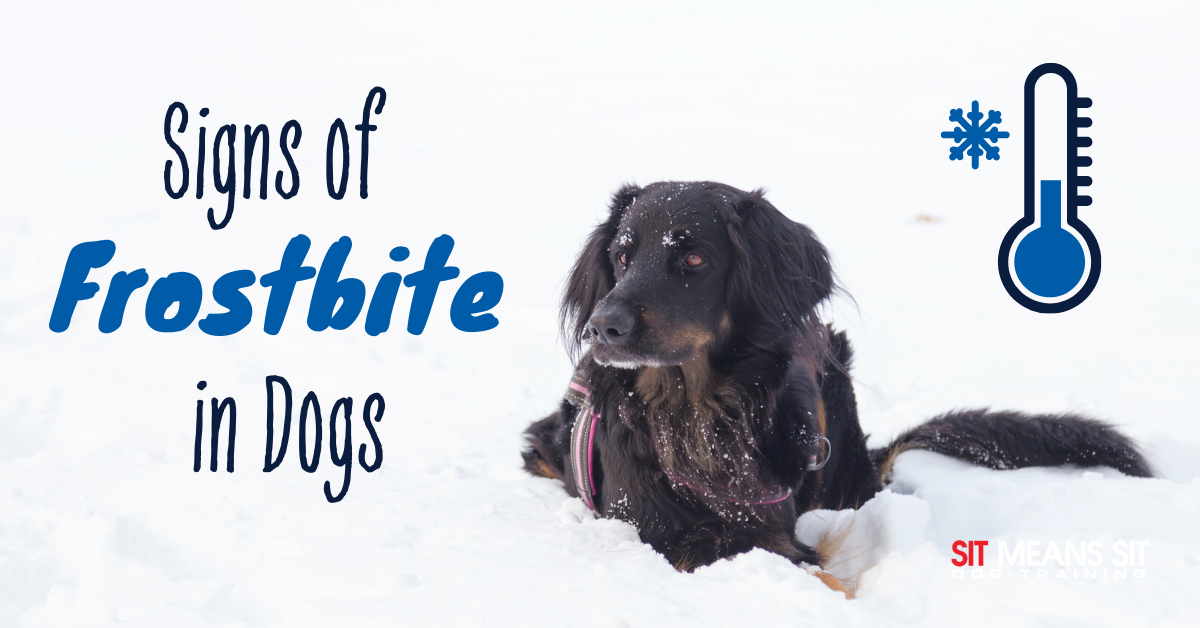
Signs of Frostbite in Dogs
If you and your pooch live in frigid temperatures, you may have to consider protecting them from frostbite. Frostbite is much more common in stray dogs, but your pet can still get it if you’re not careful. It’s important to never leave your furry friend outside without supervision while in cold weather as frostbite can seemingly creep up out of nowhere. Here’s a list of the most common frostbite signs to look out for when it comes to your canine companion.
Blue Skin
One of the first most common signs of frostbite in both humans and dogs is the skin having a blue/gray tint or turning blue. If your dog has longer fur, this may be hard to tell. Be sure to part their hair in different areas to gauge the color of their skin. Other symptoms in combination with skin color change is a telling sign that something is wrong too.
Cold
If your dog is cold to the touch, this is likely from frostbite affecting a large temperature drop in their body. If your dog has frostbite, their skin will be much colder to the touch than it normally would be after having been outside. It is a noticeable difference in temperature from what you are used to with your pooch being in the cold. If your dog’s skin warms up fairly quickly, they likely don’t have frostbite. But, if it stays cold to the touch, take them to the vet ASAP.
Pain and Swelling of the Skin
Due to your dog’s skin tissue experiencing freezing during frostbite, the skin will swell. This can be hard to notice on some dogs or if the swelling is mild, but some cases can cause extreme swelling. When investigating their skin condition (whether for swelling, coldness, or color change), observe if your dog gets defensive or aggressive. This may be a sign that they’re in pain from the frostbite swelling.
Blisters Forming
Freezing of skin tissue commonly results in blisters or ulcerations forming in the impacted areas on your pooch. It is more than likely that your dog isn’t prone to blistering, so if you notice small-large blisters and your furry friend’s skin cold to the touch, they are probably experiencing frostbite. This symptom can be stressful for your dog and scary for you, so make sure to get them to the veterinarian gently and quickly.
Skin Blackened
A dog’s skin turns bluish/grayish when affected by frostbite, but the longer the skin is exposed, the more the tissue is damaged. This damaged tissue can die and turn black instead of blue. The skin is usually completely dead in this situation, meaning that there isn’t much to be done to help heal the tissue. Blackened skin is severely dangerous and your dog will need immediate emergency assistance to prevent any more spreading of dead tissue.
What Parts does Frostbite Affect?
Frostbite can affect a lot of places on a dog’s body, but most commonly frostbite signs are seen in the ears, paws, and tail. These body parts are more likely to be exposed to cold and/or wetness and become frostbitten. Paws can tell frostbite signs fairly quickly, especially if it is snowy, icy, or generally wet outside. Be sure to check these areas first for any signs of frostbite and protect them with winter gear when possible.
Frostbite is extremely dangerous and luckily easy to recognize if you know what to look for. Take your pup to the vet immediately if you suspect they have frostbite or notice any of the symptoms above. Frostbite is serious but treatable as long as your get your dog help as quickly as possible.
